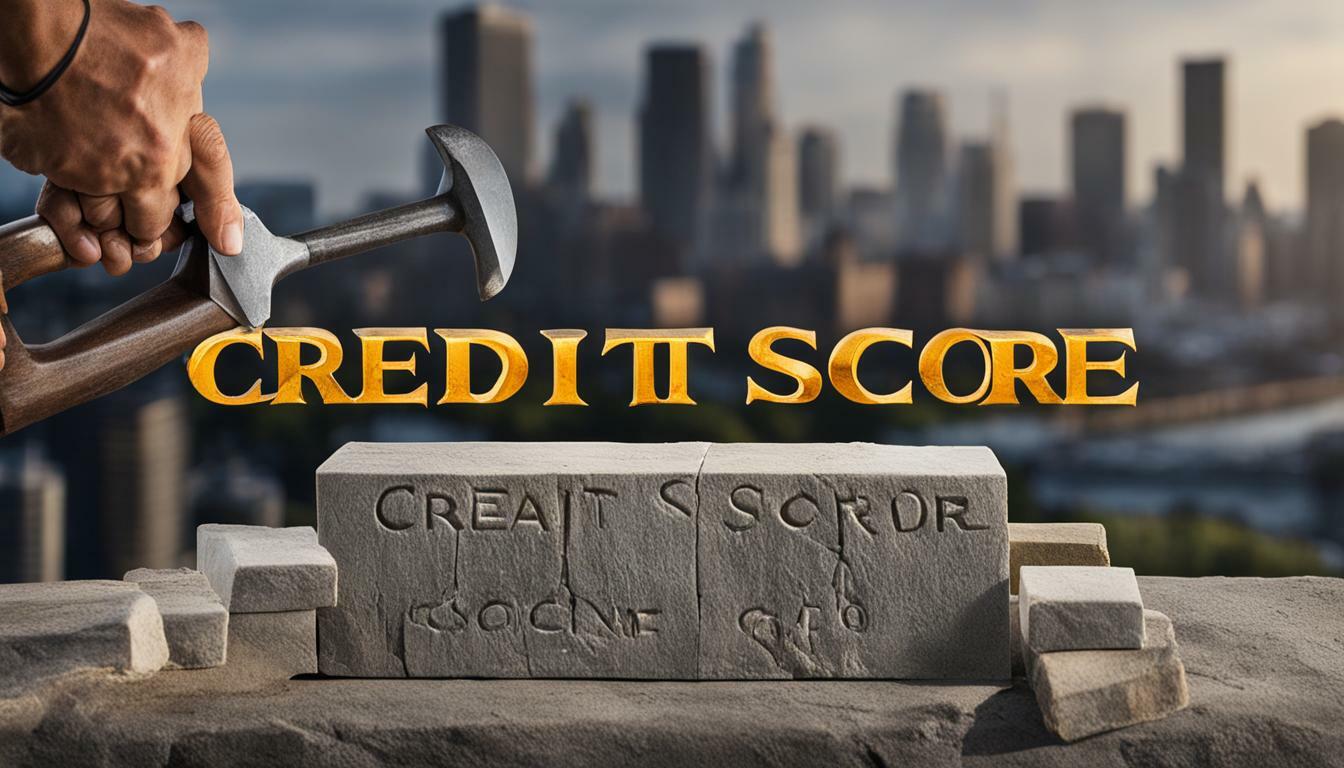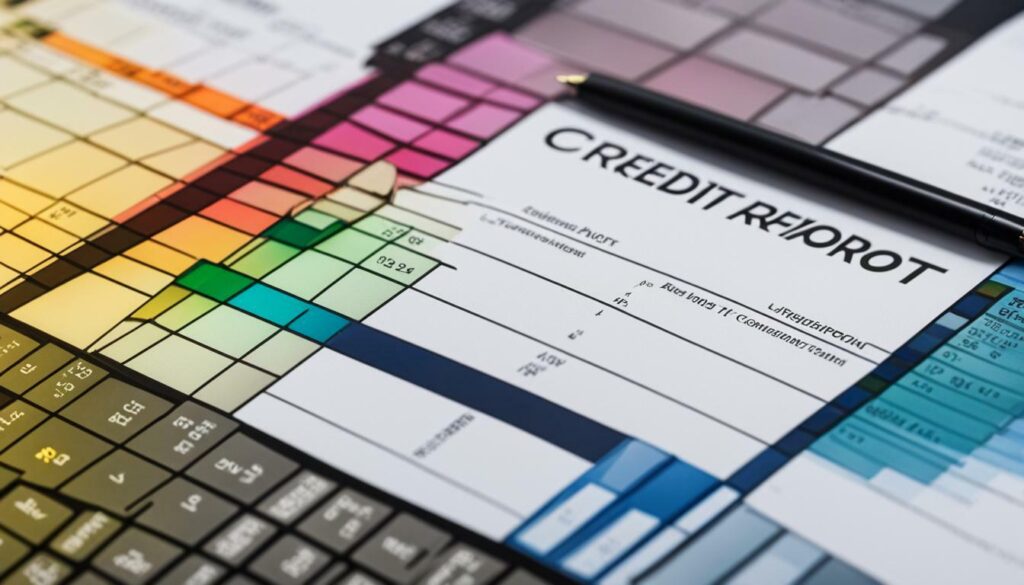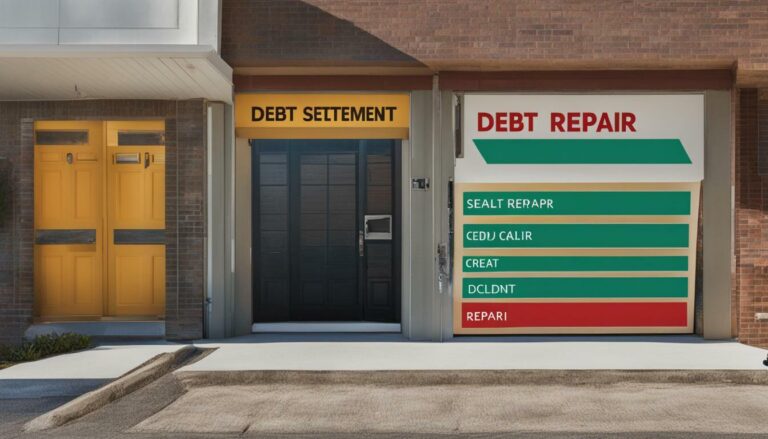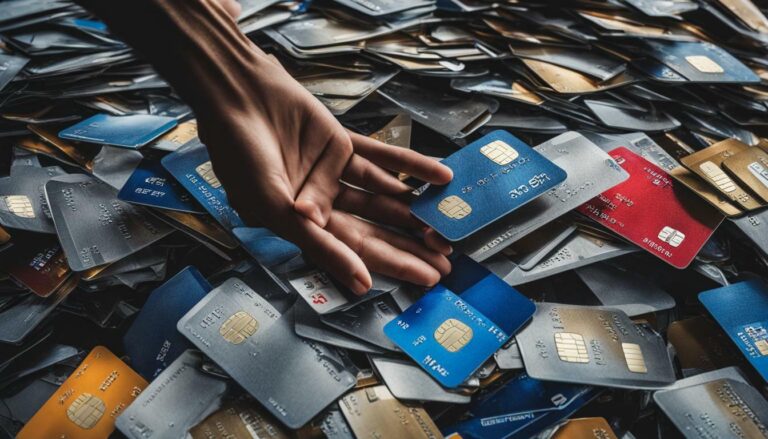Effective Steps for Credit Repair After Bankruptcy | Guide

Filing for bankruptcy can have a significant impact on your credit score, but there are steps you can take to rebuild and improve your creditworthiness. Rebuilding credit after bankruptcy is a process that requires patience, discipline, and responsible financial habits. In this guide, we will outline the most effective steps you can take to repair your credit after filing for bankruptcy. Whether you are looking to check and correct your credit report, establish responsible credit habits, or explore options like secured credit cards and authorized users, this guide will provide you with the necessary information to start rebuilding your credit and regaining financial stability.
Key Takeaways:
- Regularly check your credit report and correct any errors
- Monitor your credit score and seek ways to improve it
- Practice responsible credit habits, such as making on-time payments and keeping credit card balances low
- Consider utilizing secured credit cards or credit-builder loans to rebuild your credit
- Explore options like becoming an authorized user or using a co-signer to establish positive credit
- Be patient and allow time for your credit score to improve
- Build an emergency savings fund to avoid future debt
- Stick to a budget and maintain good credit habits for financial stability
Checking and Correcting Your Credit Report
One of the first steps in credit repair after bankruptcy is to review your credit report for errors and discrepancies. This is crucial because inaccuracies in your credit report can negatively impact your credit score and hinder your efforts to rebuild your financial health. To get started, obtain a copy of your credit report from each of the three major credit bureaus: Equifax, Experian, and TransUnion. You are entitled to one free copy of your credit report from each bureau annually.
Once you have your credit reports, carefully examine them for errors such as incorrect personal information, accounts that don’t belong to you, or accounts that were not properly discharged in your bankruptcy. If you find any inaccuracies, you have the right to dispute them with the credit bureaus. Provide clear documentation to support your claim and request that the errors be corrected.
Regularly monitoring your credit report is essential in credit score repair after bankruptcy. By staying vigilant, you can catch and address any new errors or discrepancies as they arise. Remember, it may take time for the changes to reflect on your credit report, but by taking active steps to correct errors, you are setting a solid foundation for rebuilding your credit.
🚨 TUIC Errors + Low Credit Score?
CreditScoreIQ helps you build credit faster by reporting utility bills to all 3 bureaus—while you dispute errors.
Start Building Credit Today →| Steps for Checking and Correcting Your Credit Report: |
|---|
| 1. Obtain copies of your credit report from Equifax, Experian, and TransUnion. |
| 2. Review your credit reports for errors and discrepancies. |
| 3. Dispute any inaccuracies with the credit bureaus and provide supporting documentation. |
| 4. Regularly monitor your credit report for new errors and discrepancies. |

By diligently checking and correcting your credit report, you are taking vital steps towards credit repair after bankruptcy. Remember, rebuilding your credit will require patience and responsible financial habits, but with dedication and persistence, you can achieve a stronger and healthier credit standing.
Practicing Responsible Credit Habits
Rebuilding your credit after bankruptcy requires practicing responsible credit habits, such as consistently making on-time payments and keeping your credit card balances low. These habits not only demonstrate financial responsibility to potential lenders but also contribute to improving your credit score over time.
One of the most important steps you can take is to ensure that you make all of your payments on time. Late payments can have a significant negative impact on your credit score, so it’s crucial to prioritize them. Consider setting up automatic payments or reminders to help you stay on track.
Additionally, keeping your credit card balances low can help boost your credit score. Aim to utilize no more than 30% of your available credit limit. This demonstrates that you are responsible with your credit utilization and can manage your debts effectively.
The Benefits of Responsible Credit Habits:
- Improves your credit score
- Increases your chances of loan approval
- Reduces the risk of future financial difficulties
- Builds a positive credit history
It’s important to note that rebuilding your credit after bankruptcy takes time and patience. However, by consistently practicing responsible credit habits, you can gradually improve your creditworthiness and regain financial stability.
Image:

To continue your credit repair journey after bankruptcy, consider exploring options such as secured credit cards, credit-builder loans, and becoming an authorized user on someone else’s credit card. These strategies, along with responsible credit habits, can help you rebuild your credit score and secure a brighter financial future.
Rebuilding Credit with Secured Credit Cards and Authorized Users
Rebuilding your credit after bankruptcy can be facilitated by options such as secured credit cards or credit-builder loans, which can help establish a positive credit history. A secured credit card requires a cash deposit as collateral, making it less risky for lenders. By using the secured credit card responsibly and making timely payments, you can demonstrate your creditworthiness and gradually improve your credit score.
Another option to consider is becoming an authorized user on someone else’s credit card. This can be a family member or a close friend who has good credit. By piggybacking on their credit history, their positive payment history can reflect on your credit report, potentially boosting your credit score. However, it is crucial to ensure that the primary cardholder maintains responsible credit habits, as any negative activity could have adverse effects on your credit.
Additionally, when rebuilding credit after bankruptcy, it’s important to explore credit-builder loans. These loans are specifically designed to help individuals improve their credit scores. The lender holds the loan amount in a savings account or certificate of deposit (CD), which you can access once the loan is repaid. By making consistent and on-time payments towards the credit-builder loan, you can showcase your commitment to improving your creditworthiness and demonstrate responsible financial behavior.
| Rebuilding Credit Tips: | Benefits |
|---|---|
| 1. Utilize secured credit cards | – Establish positive credit history |
| 2. Consider becoming an authorized user | – Piggyback on someone else’s good credit |
| 3. Explore credit-builder loans | – Show commitment to improving credit |
Rebuilding credit after bankruptcy is a gradual process that requires patience and responsible financial habits. By leveraging options such as secured credit cards, authorized user status, and credit-builder loans, you can take proactive steps towards rebuilding your credit and establishing a solid financial foundation.
Key Takeaways:
- Secured credit cards and credit-builder loans can help establish a positive credit history.
- Becoming an authorized user on someone else’s credit card can benefit your credit score if the primary cardholder has good credit habits.
- Consistency in making on-time payments is critical for rebuilding credit after bankruptcy.
- Patience and responsible financial habits are key to long-term credit repair success.
Remember, rebuilding credit after bankruptcy takes time and effort. By implementing these steps and practicing responsible credit habits, you can work towards improving your credit score and regaining financial stability.

Rebuilding your credit after bankruptcy requires patience, budgeting, and building an emergency savings fund to avoid potential future debt. It’s important to remember that credit repair takes time, and expecting immediate results can lead to frustration. Instead, focus on implementing positive financial habits and staying committed to your long-term goals.
To start, create a realistic budget that aligns with your income and expenses. This will allow you to track where your money is going and identify areas where you can make adjustments. Prioritize essential expenses such as rent or mortgage payments, utilities, and groceries. By sticking to a budget, you can avoid unnecessary debt and ensure that you have enough funds to meet your financial obligations.
Building an emergency savings fund is another crucial step in your credit repair journey. Having a financial safety net can protect you from unexpected expenses and prevent you from relying on credit cards or loans. Aim to save at least three to six months’ worth of living expenses in a separate account. This way, if an emergency arises, you won’t have to rely on credit and potentially accumulate more debt.
| Benefits of Patience, Budgeting, and Building an Emergency Savings Fund |
|---|
| 1. Avoiding future debt |
| 2. Financial stability |
| 3. Reduced reliance on credit |
| 4. Peace of mind in emergencies |
In the words of Warren Buffett, “Do not save what is left after spending; instead, spend what is left after saving.” This quote reminds us of the importance of prioritizing savings and making it a part of our financial habits.
Remember, rebuilding your credit after bankruptcy is a process that requires discipline and perseverance. By practicing patience, creating a budget, and building an emergency savings fund, you can lay a strong foundation for your financial future. Stay committed to your goals, and over time, you’ll see positive changes in your creditworthiness and overall financial stability.

Rebuilding your credit after bankruptcy may take time, but by following these effective steps and strategies, you can regain financial control and improve your creditworthiness.
Start by checking your credit report regularly and correcting any errors that may be negatively impacting your credit score. Monitoring your credit score will allow you to track your progress and identify areas that need improvement.
Practicing responsible credit habits is crucial in rebuilding your credit. Make sure to make on-time payments and keep your credit card balances low. These habits demonstrate your ability to manage credit responsibly and will gradually improve your credit score.
Consider utilizing tools such as secured credit cards or credit-builder loans to start rebuilding your credit. These options allow you to establish positive credit history while minimizing the risk for lenders. Additionally, becoming an authorized user on someone else’s credit card or having a co-signer can help you establish credit and improve your creditworthiness.
Patience is key during the credit repair process. It may take time for your credit score to improve, but with consistent effort and responsible financial behavior, you will see positive results. Additionally, building an emergency savings fund and sticking to a budget will help you avoid future debt and maintain financial stability.
By following these steps and strategies, you can rebuild your credit after bankruptcy and pave the way for a brighter financial future. Remember, it takes time and effort, but the end result is worth it. Take control of your credit today and start your journey towards financial success.
FAQ
How often should I check my credit report after bankruptcy?
It is recommended to check your credit report at least once a year, or more frequently if you suspect errors or fraudulent activity.
How can I correct errors on my credit report?
To correct errors on your credit report, you should contact the credit reporting agencies and provide them with the necessary documentation to support your dispute.
What can I do to improve my credit score after bankruptcy?
You can take steps to improve your credit score after bankruptcy by practicing responsible credit habits such as making on-time payments and keeping credit card balances low.
What are secured credit cards and credit-builder loans?
Secured credit cards require a security deposit and can help you rebuild your credit. Credit-builder loans are designed to help individuals establish or rebuild credit history.
How can becoming an authorized user on someone else’s credit card help me rebuild credit?
Being an authorized user on someone else’s credit card allows you to benefit from their positive credit history, potentially boosting your own credit score.
How long does it take for my credit score to improve after bankruptcy?
Improving your credit score after bankruptcy takes time and patience. It can take several years of responsible credit behavior to see a significant improvement.
Why is it important to build an emergency savings fund?
Building an emergency savings fund helps you avoid incurring future debt and provides a safety net during unexpected financial challenges.
How can I maintain financial stability after bankruptcy?
You can maintain financial stability by sticking to a budget, practicing responsible credit habits, and regularly monitoring your credit report and score.
Ready to Improve Your Credit?
Disputing TUIC errors is step one. Step two? Boost your score by reporting utility payments with CreditScoreIQ.
Get Started Now (Only $1 Trial) →3-bureau reporting • $1M identity insurance • Dark web monitoring



